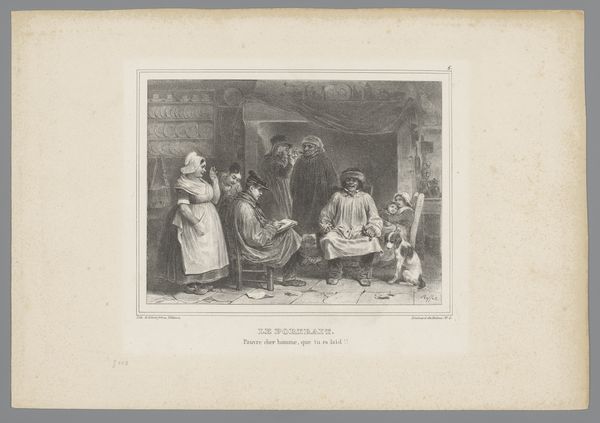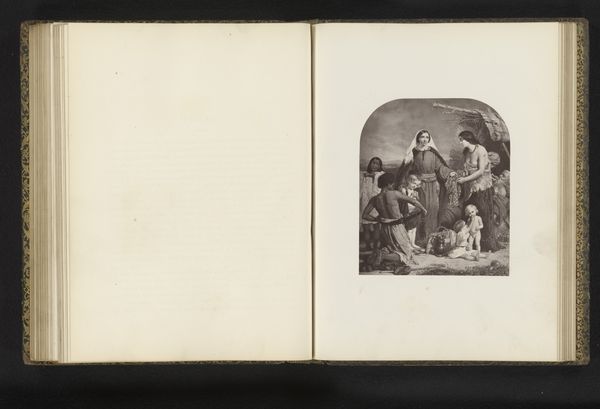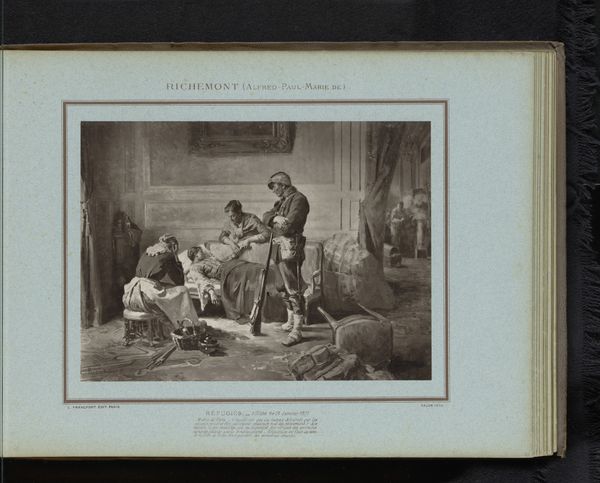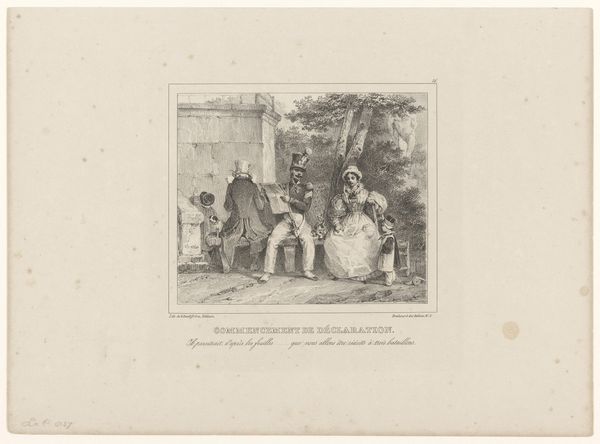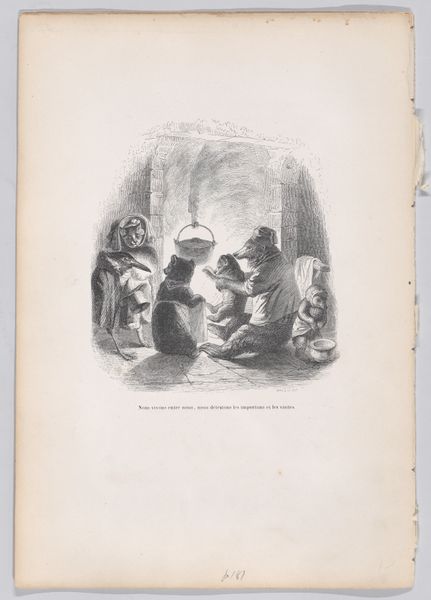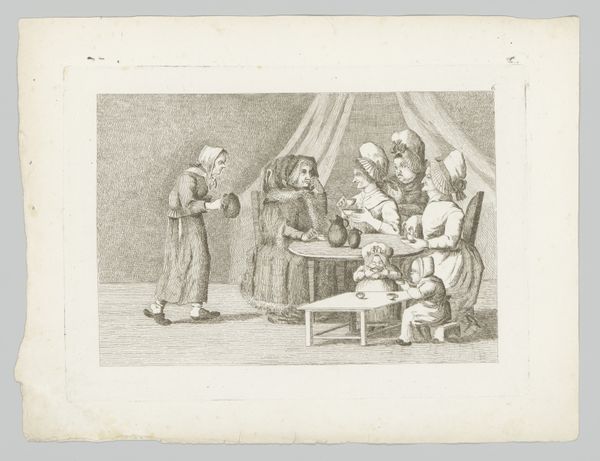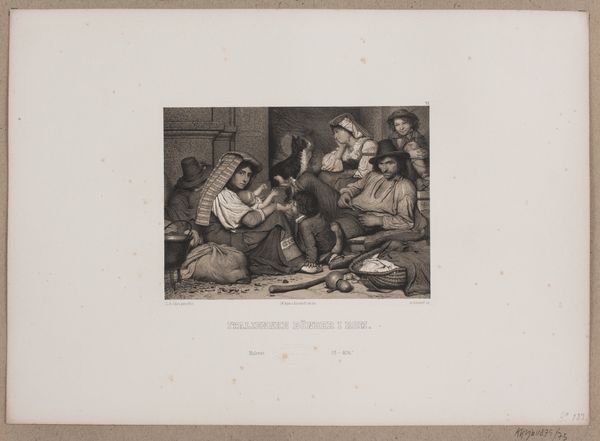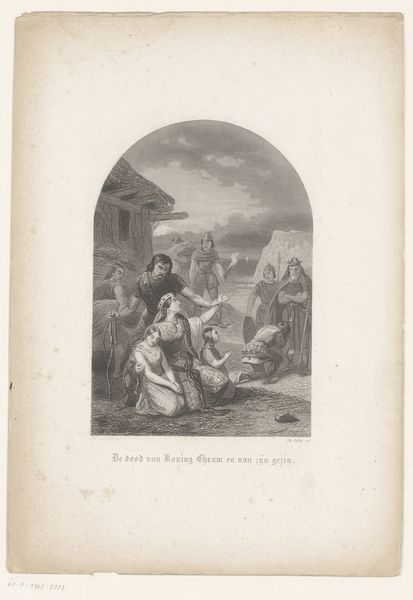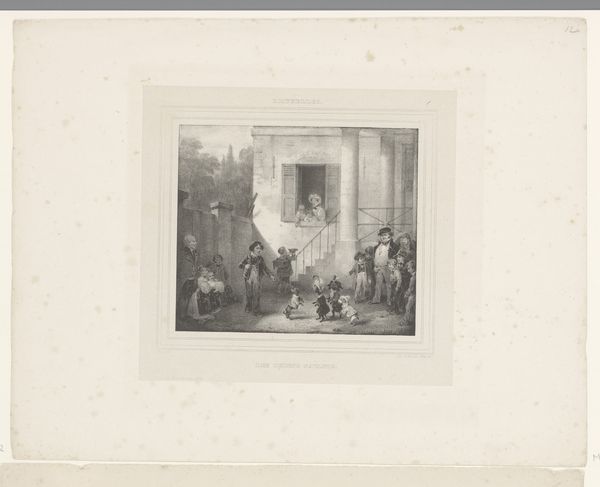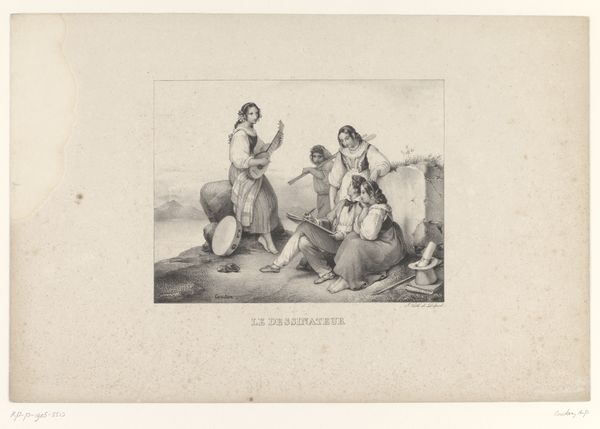
print, photography
#
portrait
# print
#
photography
#
coloured pencil
#
orientalism
#
history-painting
#
academic-art
Dimensions: height 167 mm, width 266 mm
Copyright: Rijks Museum: Open Domain
Curator: Looking at this print reproduction, the most immediate sensation for me is of formality, and maybe even rigidness, of presentation. Editor: Indeed. We’re looking at a photographic print reproduction of "Reproductie van een schilderij van Mardochai door Paul Leroy," dating back to 1884. Leroy, of course, firmly situated himself in the tradition of academic art with strong influences from Orientalism. It seems a popular subject at the time. Curator: I see that "Orientalism" label stamped all over this work; it permeates not just the aesthetic, the presumed setting and costuming, but the very power dynamics on display. The man prostrated before Mordechai... it’s a difficult image to sit with comfortably today, isn’t it? Editor: Absolutely. The social context is paramount. This piece was produced during an era of intense colonial expansion, when French art actively contributed to shaping Western perceptions – and justifications – regarding the "Orient." Mordechai’s immobility here, set against a background steeped in imagined eastern grandeur, is quite telling, perpetuating the idea of a static, easily-dominated culture. Curator: And the artist's framing of the subject certainly invites viewers into a voyeuristic, power-laden dynamic. It almost asks, ‘look at this spectacle of subjugation.’ The staging, with its rigid characters and performative submission, becomes a tool for reinforcing dominant ideologies. I wonder what Leroy’s intended audience made of this back then? Editor: No doubt many were consumed by its sheer scale. But the piece also entered a public realm shaped by imperial ambition and artistic institutional norms, where narratives aligned with power structures often found easy validation and enthusiastic acceptance. Curator: Thank you, I certainly view the artwork differently. It’s difficult not to be drawn to such grand, sweeping vistas, yet it helps when they're carefully viewed and situated within its context and time period. Editor: My pleasure! When we peel back these layers and face the realities and structures that gave life to a piece like this, we gain not only a more complete understanding of art, but history itself.
Comments
No comments
Be the first to comment and join the conversation on the ultimate creative platform.
